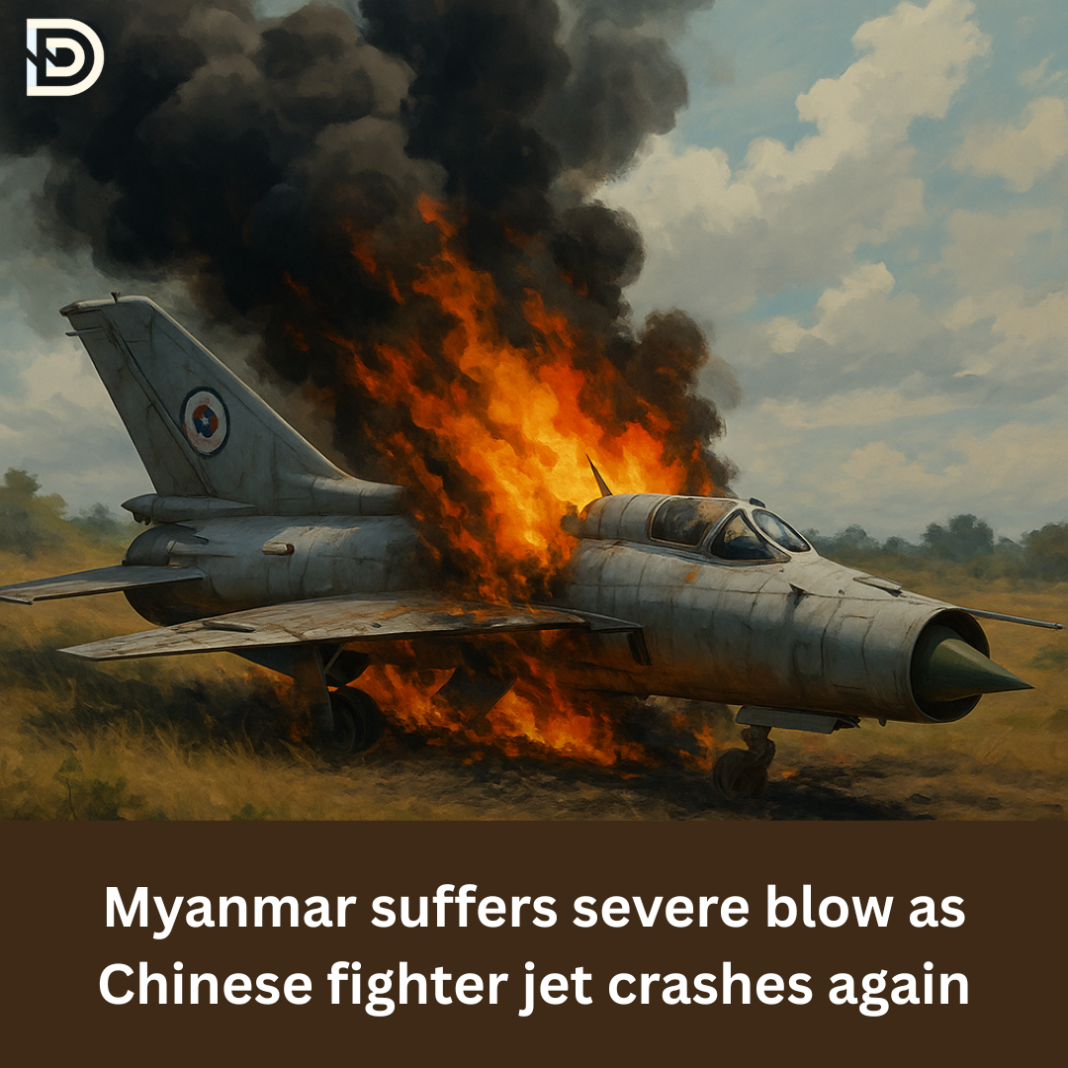Recently Myanmar Air Force experienced another serious incident involving a Chinese-made fighter jet. This time, it was an F-7 fighter aircraft that crashed in Pale Township, located in Sagaing Region. The crash led to the tragic death of the pilot onboard.
Another F-7 Jet Down: What Happened
The F-7 is an older Chinese fighter jet model and is known as the predecessor of the JF-17, which is also used by the Myanmar Air Force. Military officials from Myanmar said the crash happened because of a mechanical failure. However, a resistance group called the People’s Liberation Army (PLA) claimed they shot down the aircraft using a machine gun during a battle. Still, many experts are not sure if this version is true, as using a machine gun to down a jet fighter is very unusual and difficult.
This is not the first time that such an accident has taken place. In fact, Myanmar has had several problems with its Chinese-origin military planes in recent years, raising serious doubts about their quality and safety.
Big Concerns Over Chinese-Made Weapons
The crash on June 10 has once again raised eyebrows over the kind of weapons China sells to countries like Myanmar and Pakistan. Experts believe that Chinese fighter jets and other military equipment have shown many signs of technical weakness, especially when used for long periods or under tough conditions.
Thai F-16s Take off in Border Blitz as Myanmar’s K-8 Warplane Breaches Air Proximity
The F-7 jet that crashed is part of a family of older jets originally based on Russian designs but produced by Chinese factories. These jets have been shared with several developing countries at lower prices. However, repeated mechanical failures have made military experts question how reliable and safe these machines really are.
Myanmar has been using various types of Chinese-origin aircraft, including the JF-17 Thunder. But these jets have not lived up to expectations. In fact, many of them have faced major technical problems, making them difficult to use effectively in combat or training missions. These issues include trouble with engines, radar systems, and basic flight control, which are all crucial parts of any fighter jet.
Because of these ongoing troubles, Myanmar started to look elsewhere for stronger and more reliable warplanes. Last year, the Myanmar Air Force took a big step and decided to buy fighter jets from another country known for its advanced defense technology.
A Shift to Russian Fighters After Frustration
Due to continued disappointment with Chinese fighter jets, the Myanmar Air Force made a major change. They turned to Russia and signed a deal worth $400 million in 2018 to buy six Sukhoi Su-30SME fighter jets. These jets are known to be more advanced, powerful, and reliable compared to the Chinese-made F-7 and JF-17 fighters.
The new Russian jets were officially added to Myanmar’s air force on December 15, 2024. This happened at the Meiktila Air Base in Mandalay Region. The commissioning of these aircraft was seen as a big boost for the country’s air defense capabilities.
The Su-30SME jets can carry more weapons, fly longer distances, and handle complex combat situations better than the older Chinese fighters. Military sources believe these aircraft could help the Myanmar Air Force deal with armed rebel groups that have taken control of several regions in the country, especially near the border with India.
With rising violence and ongoing battles across different parts of Myanmar, having dependable air power is very important for the government. But relying on aircraft that break down or fail during missions puts both pilots and military operations at great risk. That is why the repeated failures of Chinese-made jets are a serious problem.
The crash on June 10 is not just another accident—it adds to a long list of mechanical troubles that highlight how Chinese military equipment may not be strong enough for real-life conditions. With the Air Force now looking to more advanced machines from other countries, this incident could mark a turning point in how Myanmar chooses its defense partners. However, as of now, these are the facts surrounding the crash and the shift in aircraft choices.
